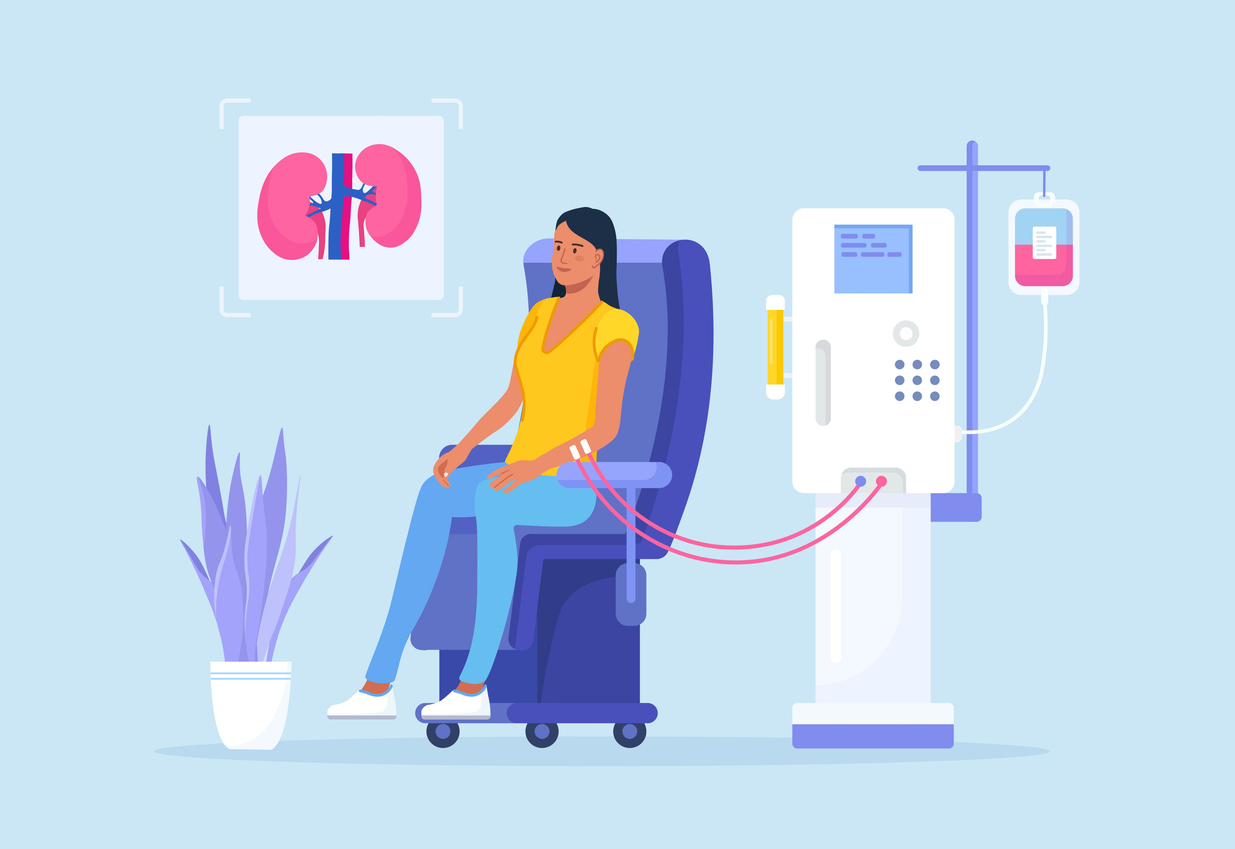Living with kidney failure is an overwhelmingly difficult challenge. However, technological and medical advances have made it possible for patients to manage this medical problem and prolong their lives. When kidneys fail, they can no longer filter waste and excess fluids from the blood. However, dialysis performs this important function of healthy kidneys and allows patients to go on with their lives despite the disease.
There are three main types of dialysis, and any Beverly Hills-based dialysis specialist will tell you that dialysis is necessary to manage kidney failure and that each type has unique procedures, benefits, and considerations.
3 Main Types of Dialysis
Hemodialysis
This is the most commonly known type of dialysis and is done 3-5 times a week usually in a dialysis center. It diverts blood from the body into a machine. The machine then cleans the blood of waste and excess fluids before it returns the blood into the body.
How it is done:
Through minor surgery usually in the arm, the medical provider will access the patient’s bloodstream by creating a vascular access site. Blood is drawn from the body, goes into the machine, blood is filtered, cleaned and is returned to the body. Each session usually lasts for around four hours.
Benefits:
-
- Helps control the patient’s blood pressure
-
- Helps balance important minerals in the blood
-
- Effective in removing waste
-
- It is usually done at dialysis centers under professional supervision
Considerations:
-
- It requires a significant time commitment
-
- Travel to and from the dialysis center can be a challenge and may be one of the reasons patients experience fatigue
Peritoneal Dialysis
This is an alternative to hemodialysis that uses the peritoneum, a membrane in the abdomen, as a natural filter. It provides flexibility and independence because it can be done at home.
How it is done:
A catheter is implanted into the abdominal cavity.
A cleansing fluid goes through the catheter into the abdominal cavity. The peritoneum filters the blood and allows the waste and excess fluids to pass from the blood into the cleansing fluid. The fluid with the filtered waste is drained and replaced with fresh fluid.
Benefits:
- More independence
- More flexible
- Diet is less restricted
- Advantageous to busy individuals
- Can be done at home
Considerations:
- Requires strict hygiene and sanitation to prevent infections
- Maintaining the equipment and performing the process can be a challenge
Continuous Renal Replacement Therapy
This is a slower, gentler type of dialysis that is usually done when the patient is unstable and cannot tolerate regular dialysis. It provides continuous slow filtration and is able to mimic the natural function of kidneys more successfully than intermittent dialysis.
How it is done:
The medical provider will look for a large vein in the neck, chest, or groin and place the catheter there. The CRRT continuously and slowly removes waste and excess fluids for 24 hours. Since filtration is slow, it is less likely to cause drops in blood pressure, which is another reason it is suitable for critically ill patients. This type of dialysis has different modes, which differ in the mechanisms used.
Benefits:
- Gentle and effective for unstable patients
- Provides continuous support
- Allows better fluid balance management
- Controls blood pressure
- Promotes normal electrolyte level
- Balances minerals and acids
- Provides protein-rich nutrition and uremic control
- Prevents changes in the intracerebral water
Considerations:
- Requires continuous monitoring
- Requires specialized equipment
- Only suitable for hospital settings
- Requires a trained professional
It is essential to understand the importance of the kidneys. They are responsible for filtering waste products, toxins, and excess fluids from the blood. Aside from that, the kidneys also regulate electrolytes and maintain acid-base balance. When kidneys fail, dialysis is the only other way these tasks can still be performed.
Advances in Dialysis Technology
Thanks to the many advances in dialysis technology, patient prognosis and quality of life have greatly improved. Portable dialysis machines and devices that can be worn have allowed patients to receive kidney dialysis treatment and still be able to engage in work and other daily routines. There are also better training programs and support systems that help both patients and caregivers to manage treatments effectively.
Common Misconceptions
Dialysis is painful
Fear of pain is a leading factor that prevents patients from receiving the treatment they need. The fact is, the pain is usually limited to the feeling of needles going into the body. There should be no other type of pain. Also, doctors will usually instruct patients about what they should do to feel comfortable during the dialysis experience.
Dialysis means death
Most people believe that once a patient is under dialysis treatment, the end is already near. The fact is, dialysis means life because it helps extend the patient’s life. It can add several years even, increasing the patient’s chances of receiving a donor kidney.
Talk to a Dialysis Specialist
If you have concerns you want to discuss or questions that need to be answered about your renal health and dialysis requirement, please do not hesitate to reach out to a professional. Schedule a consultation today.

